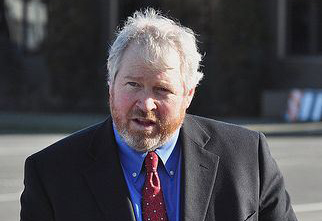
dbasultoThe new LEED-certified 7 World Trade Center is much less energy efficient than older buildings.
Here’s a tip for Manhattan building owners looking to build as energy-efficiently as possible: Build your structure 100 years ago.
New York City’s recently implemented law mandating that buildings report energy use has revealed that the city’s best performers are often not its newest additions. From the Times:
Older buildings tend to have higher Energy Star scores because they have thicker walls, fewer windows and less ventilation — superior “thermal envelopes,” as a report on the early results puts it. They are also less suited to energy-gobbling activities like computer data crunching, the downfall of some youthful but middling performers. …
Unlike cities that depend heavily on automobiles, New York racks up most of its carbon dioxide emissions — nearly 80 percent — in heating and cooling buildings. Tracking this energy use is deemed crucial to meeting the city goal of cutting overall emissions by about a third by 2030, to slash costs and fight climate change.
New York’s largest buildings — just 2 percent of the roughly one million buildings in the city — account for 45 percent of the energy expended by the entire building stock.
We took the data — which is available online — and mapped it by address. (We chose to use greenhouse gas emissions, since the metric used by the Times, its Energy Star rating, had far fewer data points. Clicking an address will reveal both its GHG emissions and efficiency rating.)
[protected-iframe id=”6b4afd92044c3a995993224fdc2d6229-5104299-30178935″ info=”http://batchgeo.com/map/bc944cec3e722e715049e1cb73bdd2ea” width=”470″ height=”550″ frameborder=”0″]
If you zoom in on Manhattan (the densest cluster of buildings) you can see that locations in Midtown, just south of Central Park, have higher GHG emissions (indicated by more red in the pie charts).
One of the factors in the energy scores is who’s using the building’s energy.
The disclosure law exempts buildings in which more than 10 percent of the space is devoted to trading floors, data centers and other energy-intensive activities.
Yet work spaces that hum 24/7 seem nonetheless to have played into the results, including [LEED-certified] 7 World Trade Center’s score.
“Seventy-four is good, but I was initially surprised that three of our older buildings scored higher than 7 World Trade Center, and it had to do principally with tenancy,” said John Lieber, who oversees buildings at ground zero for Silverstein Properties. He noted that 7 World Trade Center’s tenants included firms like Moody’s, the financial rating agency.
The higher-efficiency-scoring properties he alluded to — 120 Wall Street, the Equitable Building at 120 Broadway and 570 Seventh Avenue — house nonprofit groups, modeling agencies and other tenants whose needs are of the basic light-switch variety, he said.
(It is our understanding that some nonprofit groups also use the internet; we will update this article once we can confirm that.)
These data may become more useful over time, as indicators of how buildings have improved their efficiency scores or as a means of tracking how neighborhoods have gotten better or declined. For now, we must be content with what we’ve already learned: The greenest building in New York is a windowless one built in 1920 that is home to a modeling agency that never turns on its lights.



